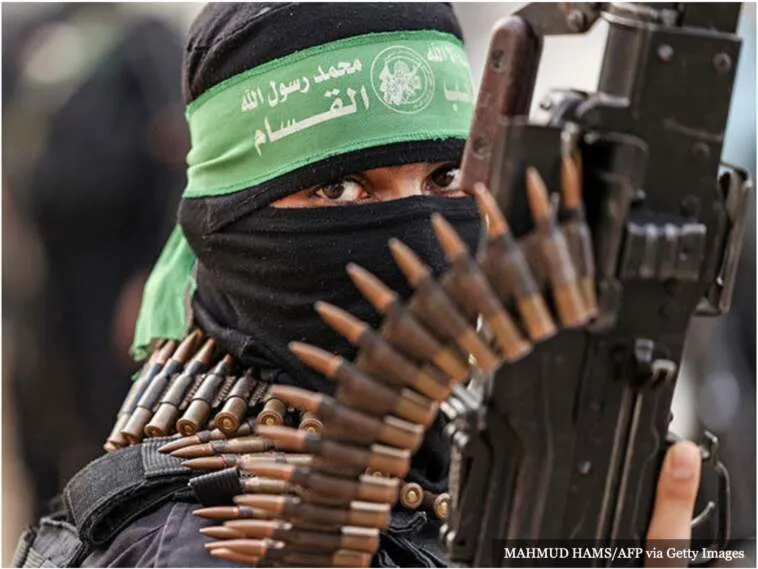(Breitbart) Israel’s military operation in Gaza, led by the IDF, has been a strategic success against Hamas, significantly diminishing the terror group’s capabilities while prioritizing the minimization of civilian casualties, according to former commander of British forces in Afghanistan Col. Richard Kemp, who noted that international allies, including Arab states, tacitly support Israel’s actions, especially considering the broader context of Iran’s influence which threatens the world. In addition, he argued, Western states’ frequent accusations against Israel are merely “for the consumption of anti-Israel voters,” though doing so is both “irresponsible” and “very dangerous.”
In an exclusive interview with Breitbart News, Kemp described the IDF’s military operations in Gaza thus far as having been “remarkable.”
“I think the success of their campaign so far will be studied by military professionals for a long time to come,” he said. “They’ve achieved, I think, much more than they expected [and] with far fewer casualties than they feared on their own side.”
Gaza Challenges
The former commander, who led British forces in Afghanistan in 2003 and later joined the committee supervising the country’s intelligence services, listed three reasons why the ground offensive has taken nearly four months, which he deemed a relatively long time.
“One is that the need to deal with a tunnel system, which is unparalleled in the history of warfare, has meant that it’s slowed their operations down significantly, and it’s been probably the single major function of the ground-war,” he said. “But they’ve already had well trained units prepared and equipped to deal with fighting the tunnels. And from what I understand, they’ve been very successful at it.”
“I’ve been into one of the tunnels underneath Gaza myself and I can testify to the complexities involved in that and the professionalism of the IDF in dealing with it,” he added.
The second reason he offered is because of the caution maintained in relation to civilian casualties.
“They obviously are intent on minimizing civilian casualties in Gaza, which is very difficult when you’re fighting an enemy that wants you to maximize their own civilian casualties as part of their strategy,” he said. “So that’s been a contributor.”
The third reason he suggested is their conduct, which aims to minimize its own casualties.
“So it’s gone relatively slowly, but I think very impressively, in the circumstances,” he said, noting that IDF soldiers are “fighting on one of the most treacherous and complex battlefields any army has ever fought on.”
What makes it “incredibly difficult to fight” is Gaza’s mainly urban terrain, “which is notoriously difficult for any combat;” Hamas’ extremely long time “to prepare the ground, to lay ambushes, to put minefields in place, [and] to position booby traps, sniper positions in both rural and urban areas;” the aforementioned tunnel complex; and the civilian population.
An additional challenge is the “intense spotlight” on Gaza, on the war “with media organizations, human rights groups, international bodies, like the UN and the EU, all desperate to accuse or convict Israel of war crimes.”
“[All] that adds to the complications of the whole operation,” he stated.
Regarding the difficulty faced by the IDF in fighting Hamas, Kemp highlighted the reality that “the whole of Gaza pretty much has been turned into an armed camp, not just for offensive purposes, like positioning rockets in and among the civilian population, but also in their defensive actions.”

Having visited locations in Gaza and seen “houses with weapons, with ammunition, grenades, explosive rocket launches under children’s beds, in kitchens, in any part of the house,” Kemp noted that Hamas terrorists can thus “move around from place to place and just pick up a weapon when they get there and attack the IDF.”
“That structure, of extremely comprehensive weaponization of the whole place, is the reason why so much of Gaza — not all of Gaza, of course, but particularly in the north — has been destroyed by IDF attacks,” he said.
Minimizing civilian casualties
According to Kemp, the ratio of Hamas enemy combatants to IDF casualties “tells a big story” in itself of Israel’s success.
“It’s estimated between 12,000 and 15,000 Hamas fighters have been killed by the IDF, which is something like a third or up towards half of the Gazan terrorists, and against that there’s been a relatively small number of IDF casualties,” he said. “Normally you’d expect it to be the opposite, even recognizing that it’s a conventional army against an unconventional force, you still expect the number of casualties on the attacking side to be significantly higher than the defending side.”
“So I think that ratio speaks for itself,” he added.
He also noted that calculating civilian casualties is currently unreliable, complicated by unverified reports and undifferentiated combatant and civilian deaths.
“Their figures, of course, come from the Hamas-controlled Gaza Health Ministry, so they can’t be trusted,” he said.
In addition, such figures make no distinction between civilians killed by the IDF or those killed by Hamas themselves.
“Hamas has killed quite a lot of them through rockets that have fallen short in civilian areas in Gaza and also their own deliberate killing of civilians, which has been documented,” he stated.
Based on his own calculations, Kemp estimated that the approximate civilian-to-military death rate in Gaza during the conflict so far is roughly 1.3 to 1.5 civilians for each combatant.
“That may sound bad, but compared to other conflicts where there has been a significant civilian presence, it’s significantly better than has been the case before,” he said. “For example, in Iraq and Afghanistan, the figures were around three to five civilians killed for every fighter killed.”
“It’s terrible to reduce human life to statistics, but from what I can see so far, it appears that the IDF has been immensely successful at minimizing civilian casualties,” he added.
Kempo described personally witnessing the efforts taken both inside and outside Gaza, to minimize civilian casualties:
“One example of that is when I was in a commander’s meeting of an IDF formation inside Gaza and three generals, and a number of staff officers were discussing the next fighting moves,” he said. “While the conference lasted about an hour, about 15–20 minutes of that hour was spent discussing how to minimize civilian casualties while trying to take out a specific target that was close to a school which housed quite a lot of civilian refugees.”
“I’ve [also] spoken to many IDF commanders and soldiers who, in every case, are aware of their responsibilities and the efforts they need to make to minimize civilian death,” he added. “As I see it, that has borne fruit when you look at the ratios I just mentioned.”
Hamas Degraded
He also noted that Hamas has now been “reduced to the point where it’s not really able to fight as a viable terrorist army.”
“They’ve had their battalion structures broken down by the killing of many of their commanders and terrorists to the extent that they’re mainly now appearing as individuals or very small groups — not as formed bodies that can do significant damage to the IDF,” he said. “And their communications have been impeded by the destruction of their systems and also by active IDF jamming measures.”






